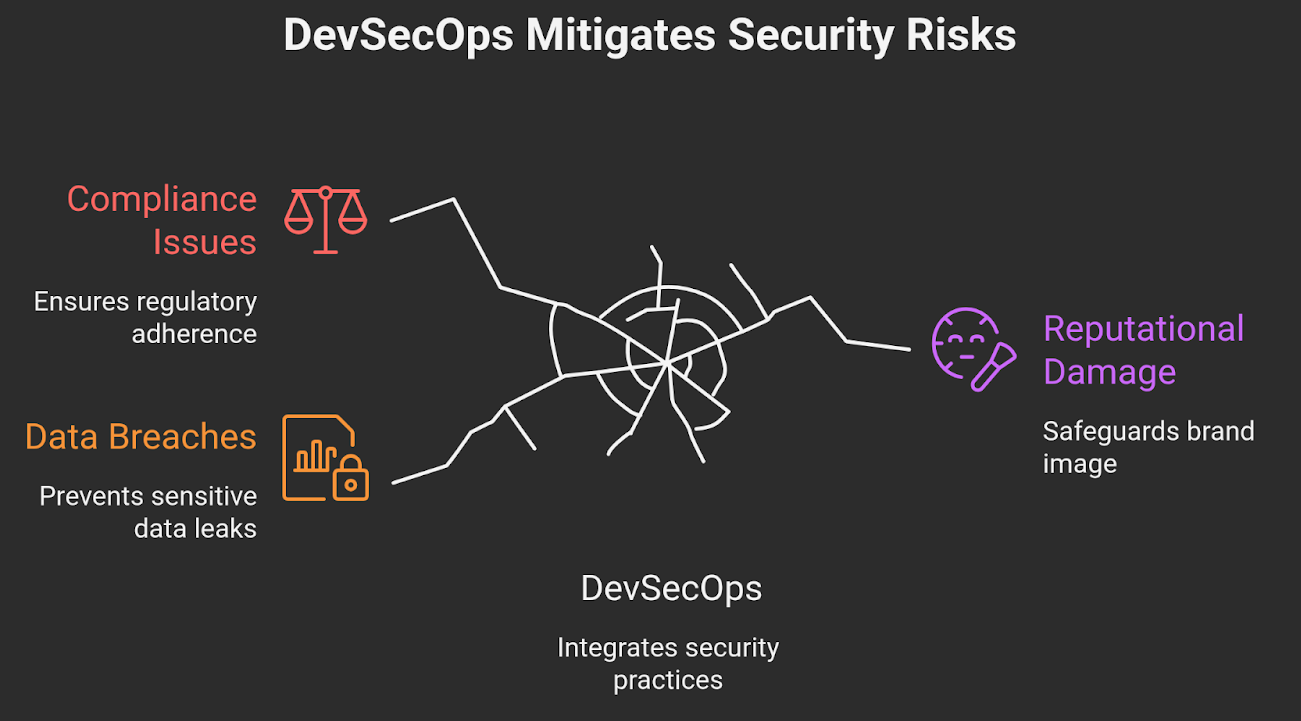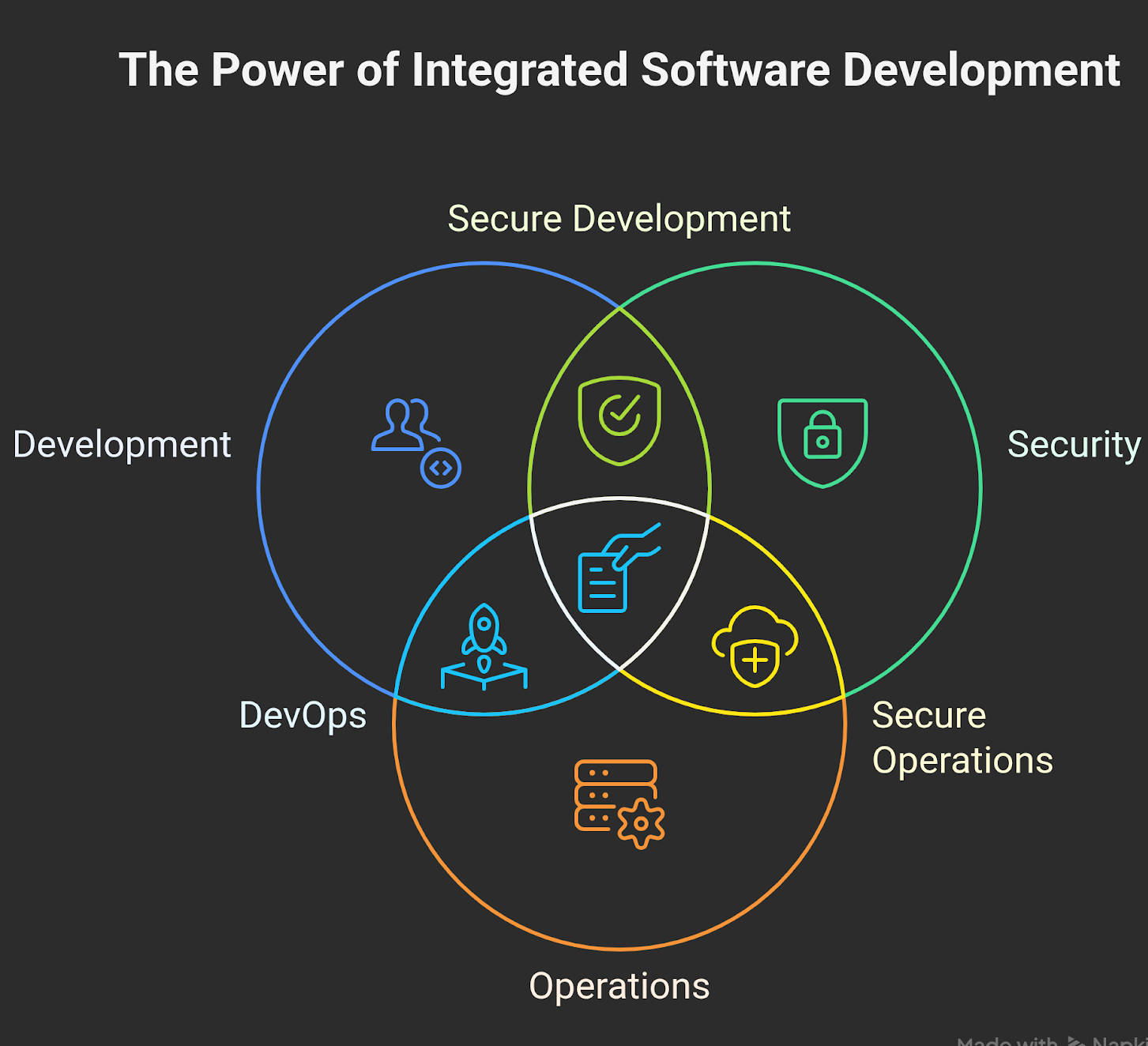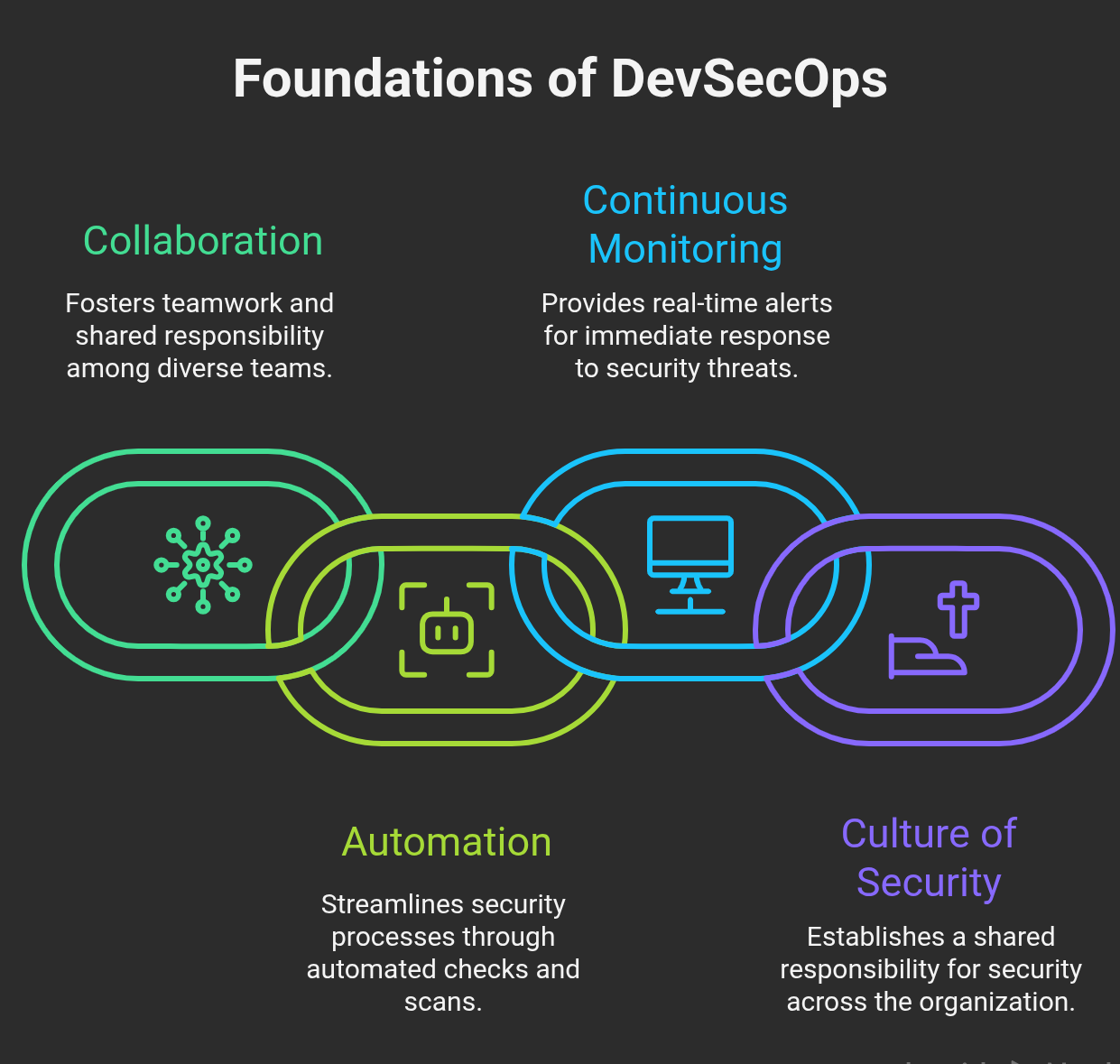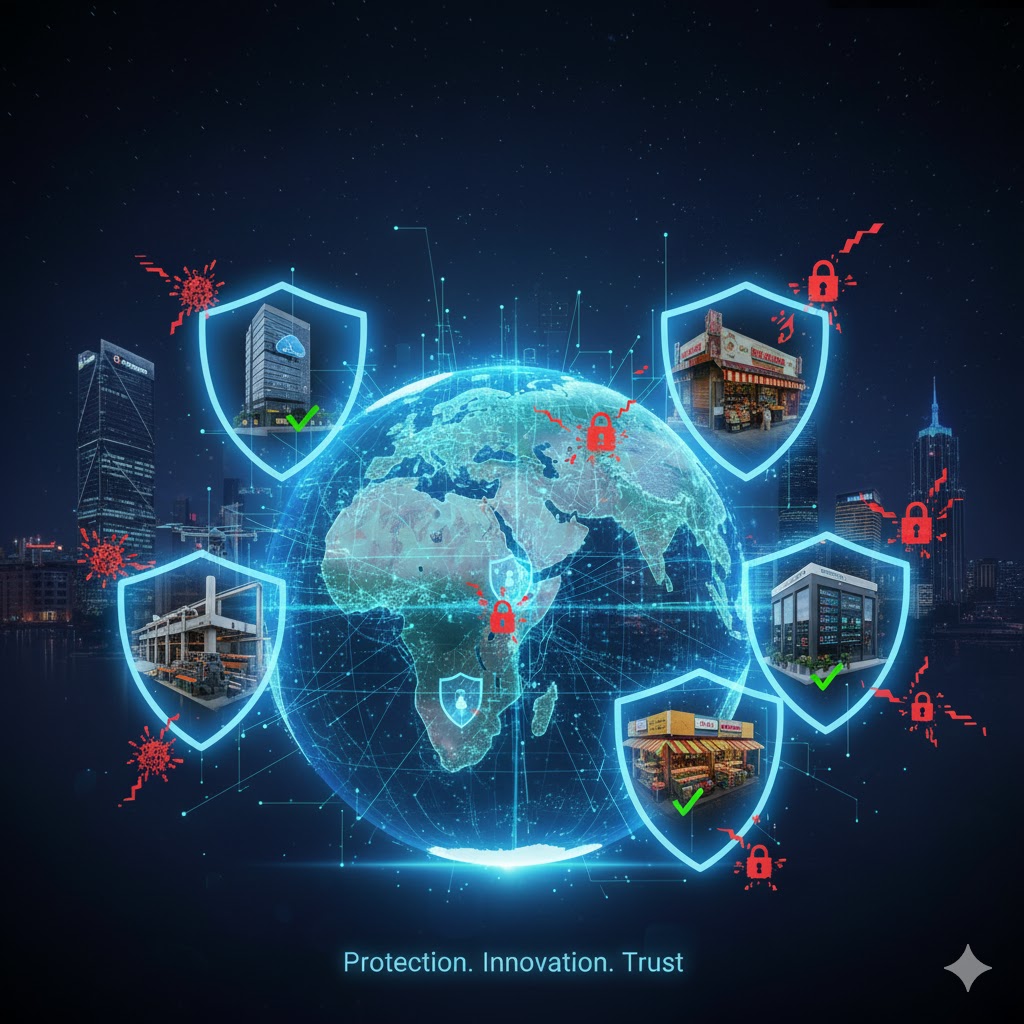In today’s fast-paced digital landscape, speed and innovation often dominate software development goals. Agile methodologies and DevOps practices have revolutionized how organizations build and release products. But with speed comes risk—security vulnerabilities can slip through the cracks, leading to data breaches, compliance issues, and reputational damage.This is where DevSecOps enters the picture.

What is DevSecOps?
DevSecOps stands for Development, Security, and Operations. It’s not just a process—it’s a mindset that integrates security practices into every phase of the software development lifecycle (SDLC).
Traditional development often treated security as an afterthought, tested only at the end of the cycle. DevSecOps, however, embeds security from the planning stage through deployment and maintenance, ensuring that vulnerabilities are caught early and fixed quickly.
Think of it as:
- DevOps = Faster Development & Deployment
- DevSecOps = Faster + Safer Development & Deployment
Why DevSecOps Matters
- Shifts Security Left : Instead of waiting until production to identify issues, DevSecOps ensures that security testing starts early, reducing the cost and time of fixing vulnerabilities.
- Reduces Risk : By continuously monitoring and testing, organizations minimize risks of data leaks, malware injection, or insider threats.
- Improves Compliance : Regulations like GDPR, HIPAA, PCI DSS, and ISO 27001 demand strong security measures. DevSecOps automates compliance checks, making audits easier.
- Supports Faster Delivery: Continuous Integration and Continuous Deployment (CI/CD) pipelines stay secure without slowing down development, ensuring both agility and protection.

Key Principles of DevSecOps
- Collaboration: Developers, operations teams, and security experts work together rather than in silos.
- Automation: Security scans, compliance checks, and vulnerability assessments are automated within pipelines.
- Continuous Monitoring: Real-time alerts ensure quick response to anomalies or suspicious activity.
- Culture of Security: Everyone is responsible for security—not just the IT or security team.
How DevSecOps Works Across the SDLC
Planning Phase
Security requirements are defined early.
Threat modeling is used to anticipate potential risks.
Coding Phase
Developers follow secure coding practices.
Automated tools scan code for vulnerabilities (e.g., static application security testing — SAST).
Build & Integration Phase
Dependency checks ensure no insecure open-source libraries are included.
Build pipelines integrate dynamic security testing (DAST).
Testing Phase
Penetration testing, vulnerability assessments, and compliance checks are performed automatically.
Deployment Phase
Secure infrastructure provisioning (using IaC — Infrastructure as Code).
Cloud security configurations validated before deployment.
Operations & Monitoring Phase
Continuous monitoring tools detect unusual patterns.

Benefits of DevSecOps for Organizations
✅ Early Vulnerability Detection – Fixing issues early is cheaper and faster.
✅ Enhanced Trust – Customers trust organizations that prioritize security.
✅ Regulatory Alignment – Smooth compliance audits save costs and avoid penalties.
✅ Resilience Against Attacks – Proactive threat detection prevents costly breaches.
✅ Business Growth – Security becomes an enabler of innovation, not a blocker.
Challenges in Implementing DevSecOps
- Cultural Resistance – Teams may resist change from traditional DevOps.
- Skill Gaps – Developers may lack security expertise.
- Tool Overload – Too many tools can complicate workflows if not integrated well.
- Balance Between Speed & Security – Finding harmony without slowing releases is key.
Best Practices for Successful DevSecOps
- Start small: Integrate security into one project before scaling.
- Provide security training to developers and staff.
- Automate wherever possible—testing, monitoring, compliance.
- Foster a “Security is Everyone’s Responsibility” culture.
- Use AI and machine learning tools for smarter threat detection.
Final Thoughts
DevSecOps isn’t just a trend—it’s the future of secure software development. By embedding security at every stage of the SDLC, businesses can deliver faster, safer, and more reliable software while building trust with customers and regulators.In an era where cyber threats evolve daily, security can no longer be an afterthought—it must be an integral part of development.





Leave a comment: